#La Cenerentola
Explore tagged Tumblr posts
Text
Nicolas Isouard's "Cendrillon": a semi-forgotten "Cinderella" opera
My latest project related to both opera and fairy tales has been an interesting one: I've introduced myself to the 1810 French opera Cendrillon, with music by Nicolas Isouard and a libretto by Charles-Guillaume Éttienne.
Without this obscure opéra-comique, Gioacchino Rossini's more famous Cinderella opera, La Cenerentola, wouldn't exist. In 1814, its libretto was adapted for an Italian opera, Stefano Pavesi's Agatina, o la virtù premiata ("Agatina, or virtue rewarded"), which was staged at La Scala. Two years later, when Rossini and librettist Jacopo Feretti were commissioned to write a new opera for the Teatro Valle in Rome, and they chose Cinderella as the subject, Feretti evidently used Agatina's libretto as the springboard for his own, and the quickly-produced result was La Cenerentola.
I haven't read the full libretto of Agatina yet, just skimmed over it, but it looks like a faithful adaptation of Isouard's Cendrillon, while La Cenerentola makes some creative departures from both. So for now, I'll just focus on discussing the Isouard/Éttienne version.
@tuttocenere, @ariel-seagull-wings, @adarkrainbow
*The plot's basic outline is very much the same as in Rossini's more familiar opera, as are the characters' names, albeit in French forms rather than Italian. The setting is Italy, and Cinderella's love interest, Prince Ramir, is the Prince of Salerno. The traditional wicked stepmother is replaced by a stepfather, the impoverished yet arrogant Baron of Montefiascone (although he's not named Don Magnifico in this version, but just called "the Baron"), and her stepsisters are named Clorinde and Tisbé. As in Rossini's version, the Prince spends most of the opera disguised as a squire, while his servant, Dandini, masquerades as the Prince. And the traditional Fairy Godmother is replaced by Alidor, a wise gentleman scholar who serves as the Prince's tutor. He disguises himself as a beggar at the beginning, and is turned away by Clorinde and Tisbé but shown kindness by Cinderella, and so he resolves to wed her to the Prince.
*Unlike Rossini and Feretti's "realistic" comedy of manners, however, this version is still a fairy tale. Alidor is a magician as well as a scholar and tutor, and he dresses Cinderella in finery and transports her to the ball by magic. He also gives her a magic rose to wear, which makes her unrecognizable to anyone who knows her (so all the confusion in La Cenerentola about the mystery lady's "resemblance" to Cinderella is a Feretti/Rossini invention) and which gives her new confidence and ladylike grace. I find the last detail interesting, because La Cenerentola also has a striking difference, in both the text and the music, between Cinderella's demeanor in her rags (so innocent, awkward, and vulnerable) and as a well-dressed lady (dignified, confident, sweetly commanding). In Isouard and Éttienne's version, this change has a magical explanation; in La Cenerentola, without any magic, it becomes psychological.
*This version also includes the traditional lost slipper, not the bracelet of La Cenerentola, because the French were less squeamish than the Italians about letting women show their ankles onstage. It's described as a green slipper, not a glass slipper, however. I assume they made this change because no one can wear glass shoes safely and comfortably onstage, but the word "vert" (green) is similar enough to the word "verre" (glass).
*In La Cenerentola, I've never been sure if the setting is meant to be the medieval principality of Salerno, meaning that Prince Ramiro is already the reigning monarch (which would make sense, since his father is dead), or if he's the crown prince of the Kingdom of Naples (whose crown princes were titled "Prince of Salerno" much like the British crown prince is titled "Prince of Wales") and just hasn't been crowned king yet because his father's will requires him to marry first. Most Cenerentola productions seem to take the latter interpretation, since they set the action around Rossini's own time, in the late 18th or early 19th century. Isouard's Cendrillon more clearly takes place in the medieval principality of Salerno, however. Prince Ramir is explicitly the monarch already, and referred to interchangeably as "the prince" and "the king" by the other characters. Another medieval touch, which La Cenerentola omits, is that the ball includes a jousting tournament: there, the disguised Prince champions Cinderella as the most beautiful of all the ladies, fighting several opponents who champion Clorinde and Tisbé on behalf of Dandini, and defeating them all.
*Cinderella also shares a scene at the ball with her stepfamily, who don't recognize her. She gives Clorinde and Tisbé gifts of her own jewelry, much like the gifts of citrus fruits in Perrault's version, and gives the Baron a jewel as well to take home "for his stepdaughter" (which of course he doesn't).
*As in La Cenerentola, the Prince and Cinderella first meet at her house before the ball, when he comes in his squire disguise. Unlike in La Cenerentola, however, Alidor is present and immediately tells the Prince that Cinderella is a member of the family, and Cinderella then articulately tells the story of her mother's marriage to the Baron and subsequent death. Nor, unlike Rossini's Don Magnifico, does the Baron ever lie that Cinderella is just a servant or that his stepdaughter died: both he and his daughters freely acknowledge her as their stepdaughter/stepsister. It seems to have been a Feretti/Rossini invention to have the Prince not know that Cinderella is of high birth. Which leads to the next point...
*When the Prince meets Cinderella in her rags, he pities her and remarks on how pretty she is, but he doesn't seem to fall in love with her yet. They don't sing a duet at this point; Cinderella sings an aria telling him about herself. Nor does he get angry or try to defend her when her stepfamily refuses to take her to the ball. It's only when she's dressed in her finery at the palace that they they sing a duet and fall in love. This is another difference that stands out from the Feretti/Rossini version. In La Cenerentola, it's Cinderella in her rags whom Ramiro falls for; their great moment of connection is in their lengthy duet when they first meet, and their interactions at the ball are minimal. He only seems to fixate on "the beautiful unknown" because she looks like the "servant girl" he met earlier, whom he presumably thinks he can't marry because of her "low birth." This changes the essence of the Feretti/Rossini version almost as much as the decision to remove magic does.
*Dandini's portrayal is a bit more mean-spirited than it would be later in La Cenerentola. He's portrayed as stupider and more incompetent, and both the Prince (with whom he barely interacts) and Alidor emphasize that he's the crudest, most idiotic man at court. This is obviously meant as social commentary, since everyone overlooks his faults and fawns over him anyway when they think he's a prince. But considering his actual low status and the glorified portrayal of the real Prince, it does feel a little too harsh at his expense. I prefer his wittier and more cunning portrayal in La Cenerentola, and his rewritten dynamic with Prince Ramiro where they co-conspire and confide in each other like friends (even if Ramiro does still call him "idiot" now and then). Not to mention his hints of flirting with Don Magnifico that the original Dandini doesn't have with the Baron. :)
*Cinderella's departure from the ball is different from both the classic tale and the Feretti/Rossini version too. After the joust, in front of everyone, the Prince and Dandini offer Cinderella the crown and the Prince's hand in marriage together, but without yet revealing which of them is really the Prince. Cinderella still thinks Dandini is the Prince and doesn't want to marry him, so she runs away, accidentally losing her slipper. Again, Feretti/Rossini made a significant change by turning this into a private scene, having Cinderella openly admit that she loves the "squire," and then having her test his love by giving him her bracelet and urging him to search for her.
*Clorinde and Tisbé both have bigger roles than in Rossini's version – each one has her own aria to sing, as well as a few duets with each other – while the Baron's role is much smaller than Don Magnifico's. In keeping with this fact, the comic scene where Dandini finally reveals that he's not the Prince is a reveal to the sisters, not to the Baron as in La Cenerentola. In a "romantic" scene with Dandini, whom they still think is the Prince, the sisters both assure him that they love him for who he is, not for his status, and that they would still want to marry him if he were a poor peasant. But then the Baron bursts in, having learned Dandini's true identity offstage, and reveals everything to his daughters. Then the real Prince arrives too, and proclaims that since the sisters "love" Dandini so much, he commands one of them (the choice is theirs) to marry Dandini that very day. The sisters, of course, refuse to do such a thing.
*The climactic scene is also entirely different from La Cenerentola's version, and a creative twist on the fairy tale's ending too. The morning after the ball, instead of traveling in search of the "beautiful unknown," the Prince invites all ladies of noble birth back to his palace, without explaining why. (This supports my theory that many early stage adaptations of Cinderella had the slipper-fitting take place at the palace, as some early screen versions do too.) Cinderella hears the proclamation and comes to the palace without asking permission, surprising her stepfamily when they meet her there. In her, Clorinde and Tisbé see what they think is the solution to their Dandini problem: they tell her about the whole Prince identity deception, then order her to marry Dandini in their place, but Cinderella refuses. Next, she happens to meet the Prince, who recognizes her as the Baron's stepdaughter he met earlier, but not as the lady he loves. Cinderella pretends to have had a dream where she saw all the events of the ball, and she assures him that "the unknown lady" loved him and only fled because she thought she would have to marry Dandini. The Prince now bitterly regrets having disguised himself, while Cinderella privately laments that the Prince doesn't recognize her and only loves the lady she pretended to be. But then Alidor gathers all the visiting ladies together and announces the reason they were summoned: whoever fits the green slipper will be the Prince's bride. Cinderella then speaks up and insists on trying the slipper on, despite the scoffs and protests of the chorus. Of course the slipper fits, and then Alidor transforms her rags back into the ballgown in front of everyone.
*A general observation, about more than just this opera: French adaptations of Cinderella seem especially prone to have Cinderella come out of her shell in the end, discard her submissiveness, and actively seek the slipper and the prince. We see it in this opera, where Cinderella goes back to the palace in her rags despite knowing her stepfamily will disapprove, flat-out refuses her stepsisters' command that she marry Dandini, and then openly insists on trying the slipper on in front of the court. We also see it in Massenet's later opera, where she calls on her fairy godmother to transport her back to the palace to try on the slipper. Maybe this is because Perrault's Cinderella openly asks to try on the slipper; maybe it also shows the influence of Madame d'Alunoy's bold Finette Cendron. But it's very different from La Cenerentola, where, when she realizes Ramiro is the Prince, she tries to hide her face and run out of the room, only for Ramiro to spot the bracelet on her wrist. Or, as another example, from Russian adaptations like Prokofiev's ballet or the 1947 film, where she not only hides her identity from the Prince, but even tries (under orders) to help one of the stepsisters fit the slipper, only for the truth to out when the other slipper is accidentally discovered in her possession. Not to stereotype different countries, but I somehow suspect this is a cultural difference, with the Italian and Russian writers more concerned about keeping Cinderella "modest" than the French writers were.
*Cinderella forgives her stepfamily in the end, but it's briefer and gets less dramatic emphasis than in La Cenerentola. I suppose several of the changes Feretti and Rossini made – their expanded role for Don Magnifico, for one thing, and their general framing of the story as a morality tale rather than a fairy tale – led to their choice to make Cinderella's forgiveness of her stepfamily a bigger emotional climax than her marriage to the Prince.
Unfortunately, the one complete recording of the opera is out of print, but bits and pieces of it have been uploaded onto YouTube. The musical score is very sweet, lyrical, elegant, and gentle – again, very different from the sparkling florid sound of Rossini. As I mentioned at the beginning, it's also an opéra-comique, meaning there's spoken dialogue between the musical numbers.
I've found it fascinating to explore this opera, both as the forerunner to the more familiar La Cenerentola and as an interesting and charming Cinderella opera in its own right. I think it would be nice to see it revived onstage more often.
#opera#cendrillon#cinderella#fairy tale#nicolas isouard#charles-guillaume éttienne#france#opéra-comique#la cenerentola
21 notes
·
View notes
Text
Still Getting Used to This
When you're on Ao3 and you find your fic on someone else's bookmarks and you're like 'hey, that looks familiar... oh!'
It takes a second, but it lights up my day
16 notes
·
View notes
Text
Callas in the studio for one of her many unreleased - working sessions recorded thruoght the 1960's.
26 notes
·
View notes
Text

un bellissimo somarro !
8 notes
·
View notes
Text
ROUND 1A, MATCH 16 OUT OF 16!
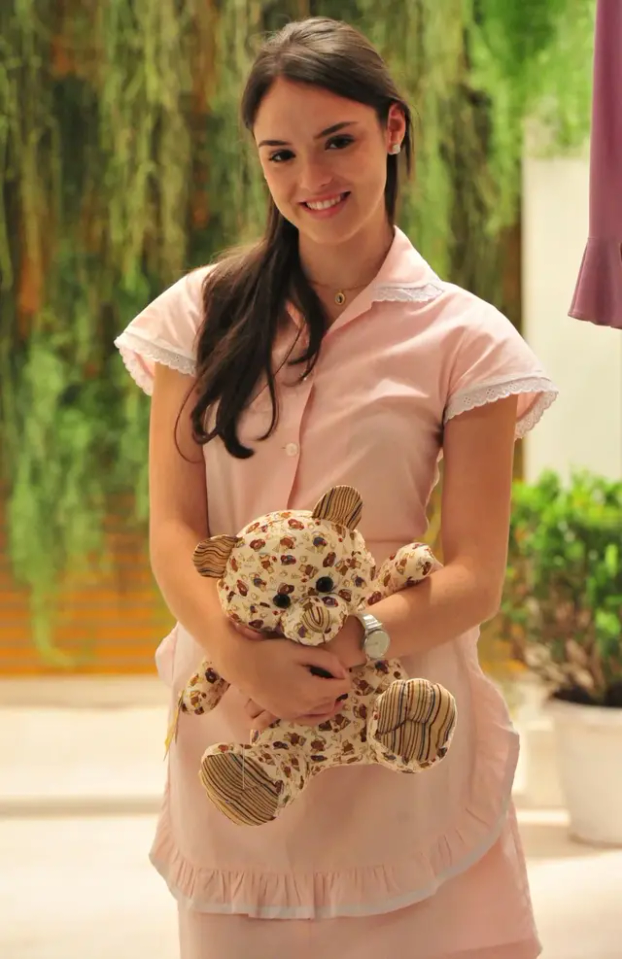
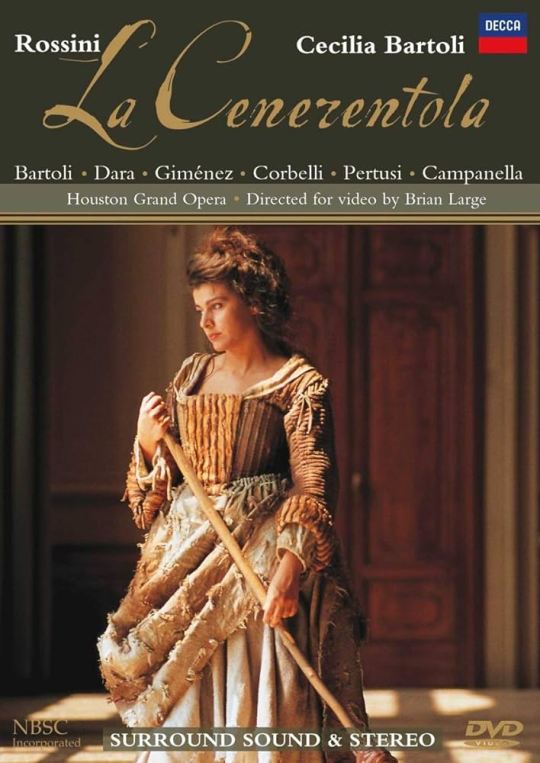
Propaganda Under the Cut:
Cida:
[No Propaganda Submitted]
La Cenerentola:
Maybe she's a pretty basic Cinderella, kind and sweet and forgiving, but I do just love this opera.
#cinderpoll#round 1#round 1a#maria aparecida dos santos souza#cida#cheias de charme#la cenerentola#la cenerentola laossia La bontà in trionfo#gioachino rossini#poll tournament#poll bracket#character polls#polls#cinderella#fairytale#folktale
13 notes
·
View notes
Text
Woo hoo!
I'm going to see Isabel Leonard and Lawrence Brownlee in La Cenerentola in June!
6 notes
·
View notes
Text

youtube
9 notes
·
View notes
Text
I'd love to hear why the one you chose is your favorite!
13 notes
·
View notes
Text
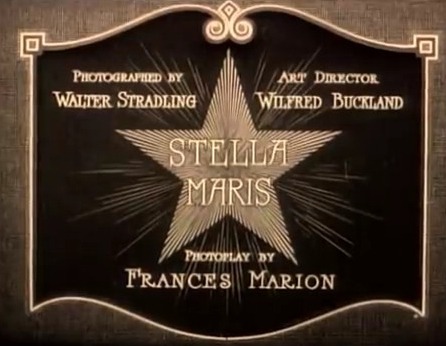
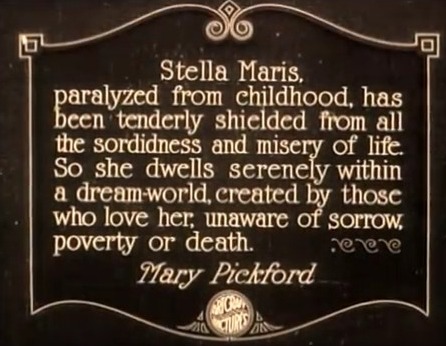
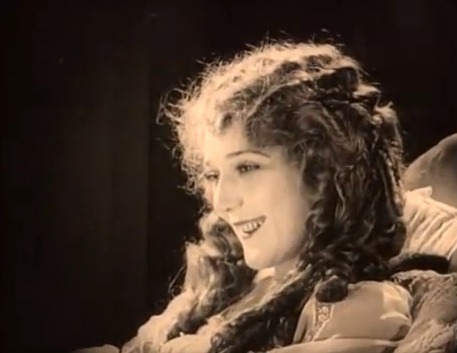

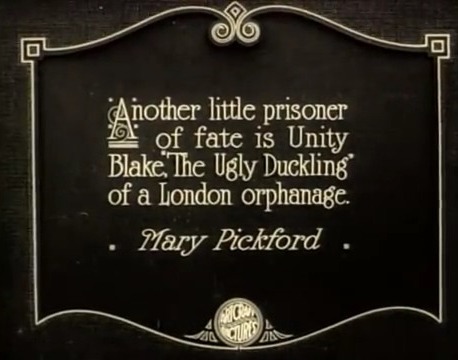
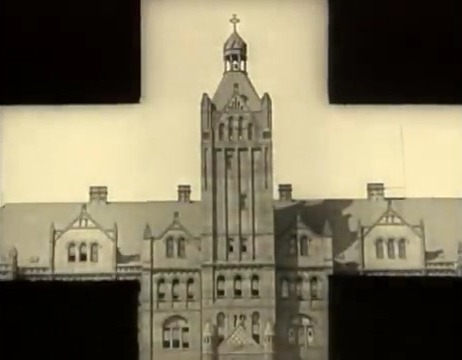

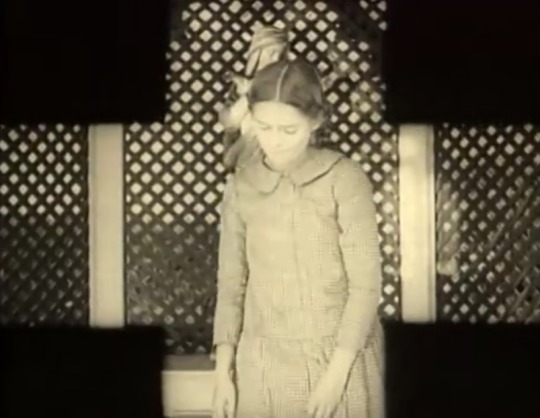
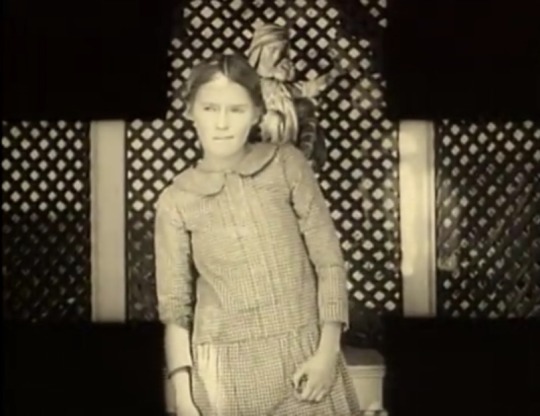
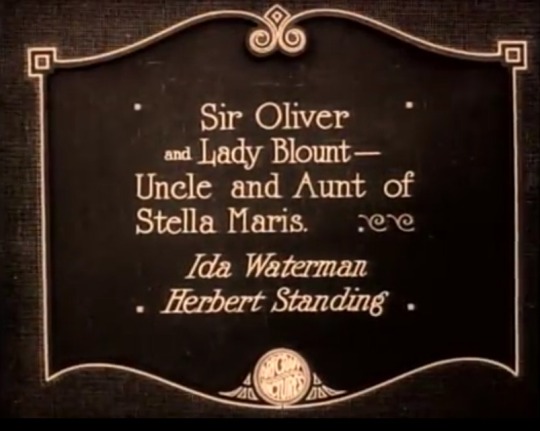
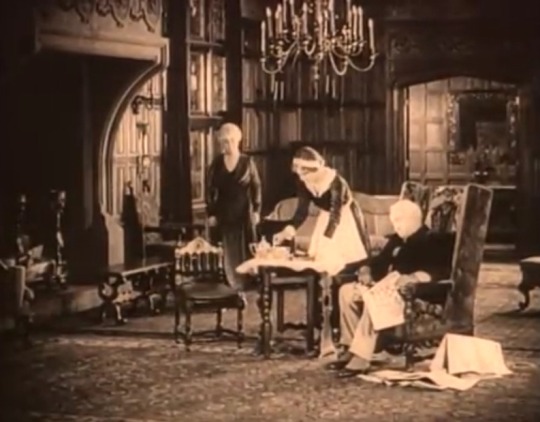


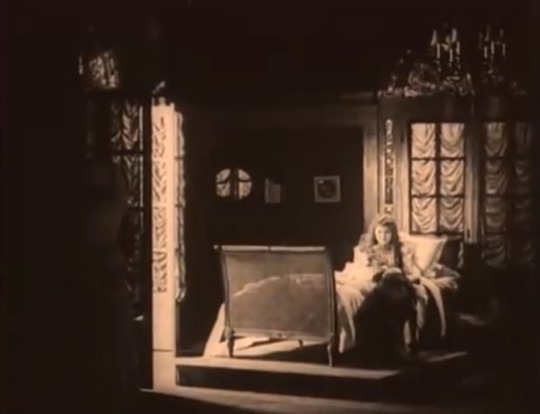
*
youtube
#stella maris#marshall neilan#1918#mary pickford#tess of the storm country#la cenerentola#rossini#meret becker#einstürzende neubauten#tabula rasa#blume#anita lane#m
3 notes
·
View notes
Text
Opera on YouTube 5
Nabucco
Teatro alla Scala, 1987 (Renato Bruson, Ghena Dimitrova; conducted by Riccardo Muti; no subtitles)
Teatro di San Carlo, 1997 (Renato Bruson, Lauren Flanigan; conducted by Paolo Carognani; no subtitles)
Ankara State Opera, 2006 (Eralp Kıyıcı, Nilgün Akkerman; conducted by Sunay Muratov; no subtitles)
St. Margarethen Opera Festival, 2007 (Igor Morosow, Gabriella Morigi; conducted by Ernst Märzendorfer; English subtitles)
Rome Opera, 2011 (Leo Nucci, Csilla Boross; conducted by Riccardo Muti; English and German subtitles)
Teatro Comunale di Bologna, 2013 (Vladimir Stoyanov, Anna Pirozzi; conducted by Michele Mariotti; Italian subtitles)
Rome Opera, 2013 (Luca Salsi, Tatiana Serjan; conducted by Riccardo Muti; no subtitles)
Gran Teatro Nacional, Perú, 2015 (Giuseppe Altomare, Rachele Stanisci; conducted by Fernando Valcárcel; Spanish subtitles)
Metropolitan Opera, 2017 (Plácido Domingo, Liudmyla Monastyrska; conducted by James Levine; Spanish subtitles)
Arena di Verona, 2017 (George Gagnidze, Susanna Branchini; conducted by Daniel Oren; English subtitles)
La Cenerentola (Cinderella)
Jean-Pierre Ponnelle studio film, 1981 (Frederica von Stade, Francisco Araiza, Paolo Montarsolo; conducted by Claudio Abbado; English subtitles)
Glyndebourne Festival Opera, 1983 (Kathleen Kuhlmann, Laurence Dale, Claudio Desderi; conducted by Donato Renzetti; no subtitles)
Salzburg Festival, 1988 (Ann Murray, Francisco Araiza, Walter Berry; conducted by Riccardo Chailly; English subtitles)
Tokyo Bunka Kaikan, 1991 (Lucia Valentini-Terrani, Toshiro Gorobe, Domenico Trimarchi; conducted by Antonello Allemandi; Japanese subtitles) – Act I, Act II
Houston Grand Opera, 1995 (Cecilia Bartoli, Raúl Giménez, Enzo Dara; conducted by Bruno Campanella; no subtitles)
Rossini Opera Festival, 2000 (Sonia Ganassi, Juan Diego Flórez, Bruno Praticó; conducted by Carlo Rizzi; Italian subtitles)
Gran Teatre del Liceu, 2008 (Joyce DiDonato, Juan Diego Flórez, Bruno de Simone; conducted by Patrick Summers; German subtitles)
Romeo Opera, 2015 (Serena Malfi, Juan Francisco Gatell, Alessandro Corbelli; conducted by Alejo Pérez; Italian and English subtitles)
Lille Opera, 2016 (Emily Fons, Taylor Stayton, Renato Girolami; conducted by Yves Parmentier; English subtitles)
Boboli Gardens, Florence, 2020 (Svetlina Stoyanova, Josh Lovell, Daniel Miroslaw; conducted by Sándor Károlyi; no subtitles)
Lucia di Lammermoor
Tokyo Bunka Kaikan, 1967 (Renata Scotto, Carlo Bergonzi; conducted by Bruno Bartoletti; English subtitles)
Mario Lanfranchi film, 1971 (Anna Moffo, Lajos Kosma; conducted by Carlo Felice Cillario; English subtitles)
Bregenz Festival, 1982 (Katia Ricciarelli, José Carreras; conducted by Lamberto Gardelli; no subtitles) – Part I, Part II
Opera Australia, 1986 (Joan Sutherland, Richard Greager; conducted by Richard Bonynge; English subtitles)
Teatro Carlo Felice, 2003 (Stefania Bonfadelli, Marcelo Álvarez; conducted by Patrick Fournillier; Japanese subtitles)
San Francisco Opera, 2009 (Natalie Dessay, Giuseppe Filianoti; conducted by Jean-Yves Ossonce; English subtitles)
Amarillo Opera, 2013 (Hanan Alattar, Eric Barry; conducted by Michael Ching; English subtitles)
Gran Teatre del Liceu, 2015 (Elena Mosuc, Juan Diego Flórez; conducted by Marco Armiliato; French subtitles)
Teatro Real de Madrid, 2018 (Lisette Oropesa, Javier Camerana; conducted by Daniel Oren; English subtitles)
Vienna State Opera, 2022 (Lisette Oropesa, Benjamin Bernheim; conducted by Evelino Pidó; English subtitles)
Il Trovatore
Claudio Fino studio film, 1957 (Mario del Monaco, Leyla Gencer, Fedora Barbieri, Ettore Bastianini; conducted by Fernando Previtali; English subtitles)
Wolfgang Nagel studio film, 1975 (Franco Bonisolli, Raina Kabaivanska, Viorica Cortez, Giorgio Zancanaro; conducted by Bruno Bartoletti; Japanese subtitles)
Vienna State Opera, 1978 (Plácido Domingo, Raina Kabaivanska, Fiorenza Cossotto, Piero Cappuccilli; conducted by Herbert von Karajan; no subtitles)
Opera Australia, 1983 (Kenneth Collins, Joan Sutherland, Lauris Elms, Jonathan Summers; conducted by Richard Bonynge, English subtitles)
Metropolitan Opera, 1988 (Luciano Pavarotti, Eva Marton, Dolora Zajick, Sherrill Milnes; conducted by James Levine; no subtitles)
Bavarian State Opera, 2013 (Jonas Kaufmann, Anja Harteros, Elena Manistinta, Alexey Markov; conducted by Paolo Carignani; English subtitles)
Temporada Lirica a Coruña, 2015 (Gregory Kunde, Angela Meade, Marianne Cornetti, Juan Jesús Rodriguez; conducted by Keri-Lynn Wilson; no subtitles)
Opéra Royal de Wallonie-Liége, 2018 (Fabio Sartori, Yolanda Auyanet, Violeta Urmana, Mario Cassi; conducted by Daniel Oren; French subtitles)
Arena di Verona, 2019 (Yusif Eyvazov, Anna Netrebko, Dolora Zajick, Luca Salsi; conducted by Pier Giorgio Morandi; German subtitles)
Teatro Verdi di Pisa, 2021 (Murat Karahan, Carolina López Moreno, Victória Pitts, Cesar Méndez; conducted by Marco Guidarini; no subtitles)
#opera#youtube#complete performances#nabucco#la cenerentola#lucia di lammermoor#il trovatore#giuseppe verdi#gioachino rossini#gaetano donizetti
30 notes
·
View notes
Text
"It was not until he'd seen her that he'd thought that humans were indeed made of fallen stars"
#KHR#la cenerentola#ran#katekyo hitman reborn#sawada tsunayoshi#sawada tsuna#Tsuna's first thoughts on Ran#Sees her#Compares her to stardust#TsuRan
5 notes
·
View notes
Text
youtube
Tecnica e voce veramente su un altro pianeta, anche non è la Cenerentola del mio cuore.
La chimica tra lei e Araiza è inesistente, a differenza di quella tra lui e Von Stade, ma le voci sono perfette insieme e rendono molto meglio l'idea della differenza di condizione dei due personaggi (Cenerentola è un contralto ma può essere interpretata da un mezzo con buona estensione ed agilità, la Baltsa era un mezzo con grande potenza e toni molto drammatici, forse troppo, per la parte, ma comunque bellissima nel tono e precisissima nei passaggi, cosa che la Von Stade, a volte, non è). Duetto freddo ma statuario, bellissimo (con la Von Stade ci si credeva veramente, che fossero due innamorati, qui si vede che sono due cantanti in una parte).
Penso che ci sia Ruggero Raimondi nella parte di Dandini.
youtube
Stade-Araiza per confronto (a parte la regia patinata, trattandosi di un allestimento pensato per essere ripreso, a differenza della versione Baltsa-Raimondi-Araiza).
#agnes baltsa#great female singers#rossini#gioachino rossini#francisco araiza#cenerentola#gioacchino rossini#la cenerentola#italian opera#opera#lyrical opera#ruggero raimondi#Youtube
1 note
·
View note
Text
Cinderella (La Cenerentola) San Diego Opera Artist Night
The San Diego held an Artist Night Live Sketch during a dress rehearsal for the Opera Cinderella (La Cenerentola) on October 19, 2016. Local artists were permitted to attend and live sketch the performers. Art by Laurel Latto.
The San Diego held an Artist Night Live Sketch during a dress rehearsal for the Opera Cinderella (La Cenerentola) on October 19, 2016. Local artists were permitted to attend and live sketch the performers. Art illustrations were initially created using pencil on paper followed by watercolor pencils. A water wash was used followed by pen for details. Art by Laurel Latto. Learn more about the San…
#Artist Night#cinderella art#cinderella illustration#Cinderella Opera#La Cenerentola#live sketch#opera#opera artwork#opera illustration#opera illustrations#opera painting#opera sketch#san diego opera
0 notes
Text


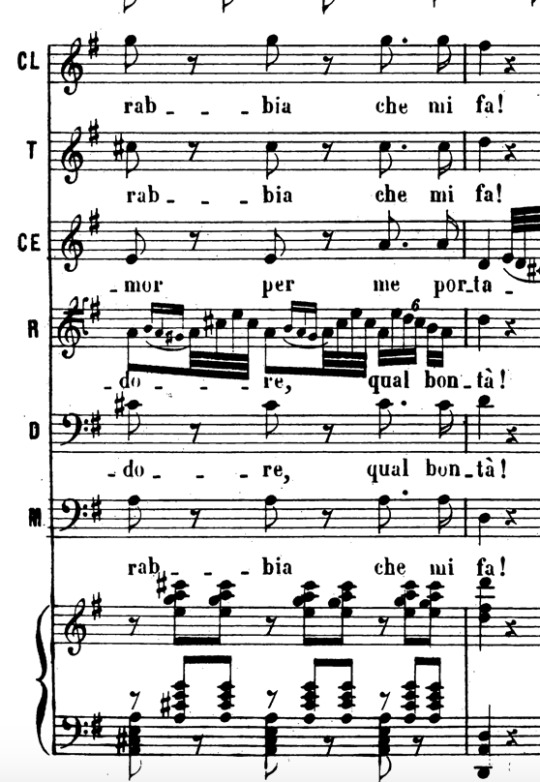
honestly some of my favorite moments in rossini's la cenerentola are in Act 1 (signor! una parola) (image 1) and in Act 2 (Ah signor, s'è ver che in petto) (images 2-4) where in each isntance Ramiro and Dandini take turns weaving in an out the same phrases which in turn build into a climax. they're very affecting movements and show (even if conventionally) the relationships among the characters (Ramiro and Dandini the heroes are always parallel/singing the same phrases over and against Don Magnifico) and I could listen to them over and over
0 notes
Text
ROUND 2A, MATCH 8 OUT OF 8!


Propaganda Under the Cut:
Mia Basile:
Her stepmother murdered her father in front of her and she became mute from the trauma. She has 6 stepsiblings who are all assassins and make her clean up their kills. She lives on a ship with hologram ghosts in futuristic Naples. Beats up the man who ordered her father's death
La Cenerentola:
Maybe she's a pretty basic Cinderella, kind and sweet and forgiving, but I do just love this opera.
I just went to opera today (for something totally different tho) so... here's the whole Rossini's La Cenerentola for you. (For the impatient people, who want to skip the overture, singing starts at about 8 mins and Cinderella's first part at about 9:30 XD)
#cinderpoll#round 2#round 2a#mia basile#cinderella the cat#gatta cenerentola#la cenerentola laossia la bontà in trionfo#la cenerentola#cinderella#fairytale#poll tournament#poll bracket#character polls#polls
8 notes
·
View notes
Text


ISABEL LEONARD as Angelina in ROSSINI: LA CENERENTOLA Bavarian State Opera, 2024
5 notes
·
View notes